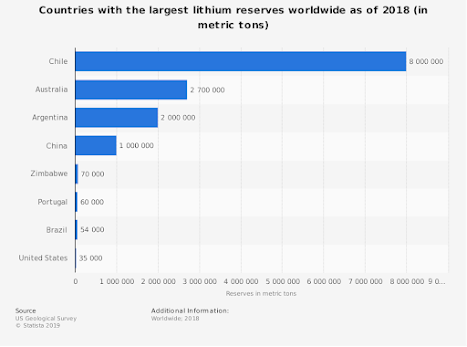Is India ready for Electric Vehicles?
The Indian government is aiming to achieve 100% electric vehicle mobility by 2030. In fact, the Indian EV market is anticipated to witness a robust CAGR growth of 42.38%.
In COP26 climate change summit in Glasgow, The government of India announced ambitious climate change targets. They announced that India will achieve net zero carbon emissions by 2070 and with emissions intensity expected to be reduced by 45% by 2030 from the 2005 levels. Since the transport sector is one of the highest emitters of GHGs in India, this puts a spotlight on how fast electric vehicles can replace conventional vehicles.
In this blog we will see the challenges India have and how we can overcome them for faster adoption of electric vehicle.
Challenges:
- Lack of charging Infrastructure-
This is one of the most common challenges associated with owning the electric vehicle. India was reported to have 650 charging stations in 2018, whereas China had over 456K charging points in the same year.
In 2020 India has 927 charging stations which is significantly less than when compared to 57,000 petrol pumps which country has across various states.
It is true that the EV sales are increasing day by day, but it is limited to intra-city travelling. This issue needs to be overcome by increasing the charging stations across the cities.
- Range anxiety-
Range anxiety is the electric vehicle owner’s fear that an EV’s battery does not have sufficient enough charge for the vehicle to reach its final destination or that a charge point won’t be available for charging. This issue is deeply linked to the lack of charging infrastructure in the country. conventional vehicles can be refueled at petrol stations, such regularized infrastructure is not yet available for EVs.
- High price –
Electric vehicles are way more expensive than their conventional fuel-powered counterparts. For example, the Tata Nexon price starts from ₹7.19 lakh, while the Tata Nexon EV price starts from ₹13.99 lakh. This huge price difference discourages many interested EV buyers to shy away from making the final decision to buy a BEV.
- Unavailability of lithium-
The lithium-ion battery is the most popular and widely used energy source for EVs. India doesn't produce lithium. The country doesn't produce li-ion batteries either. India relies on import for EV batteries resulting in the sky-high price for these important components and eventually the EVs as well.
- FAME Policy
The Indian government took an attempt to promote electric mobility in the country via incentivizing and discounts for EVs. The terms and conditions of the FAME(Faster Adoption and Manufacturing of Electric vehicle) scheme doesn't support a majority of the electric vehicles.
The low-speed electric two-wheelers, lead-acid battery powered EVs are not covered under FAME. The highly expensive high-speed EVs on the other hand require registration charge, driving license. This results in many customers shying away from buying EVs.
- Lack of Trained Personnel
the lack of skilled personnel in electric vehicle markets is a significant challenge that foreign investors have to deal with. Fleet operators and company car drivers with electric vehicles (EVs) are set to face longer periods of downtime in the event of a mechanical failure or collision if automotive aftersales businesses don’t adapt more quickly to handle new models.
Impact of FAME II Policy for businesses
In the year 2019, the Indian government approved the FAME II scheme, by which the government has proposed to invest about USD 1.4 billion to incentivize the production of electric vehicles in the country. However, FAME II policy also requires 50% localization in vehicle production is required to avail of the incentive. This is a significant India market entry strategy barrier for most organizations as the Indian component suppliers are not yet ready to manufacture components in the face of the present low value of electric vehicles in the market. Therefore, most firms will not be able to enjoy the benefits of the FAME II incentive, which consequently impacts the entry of India business opportunities.
What measures India is taking to overcome these challenges:
As it is said, " Every challenge is an opportunity in disguise", the same way the above-mentioned challenges could be stepping stones towards a modern India.
Cities, towns and villages in India will soon be able to benefit from an innovative low-cost Electric Vehicle (EV) charge point that can accelerate the adoption of Electric 2-wheelers and 3-wheelers. A forthcoming Indian Standard will allow a rapid scaling up of EV charging infrastructure that is much needed in the country.
With the general lack of charging infrastructure in the country for the moment, innovative solutions like battery swapping and mobile charging units may provide some relief in the case of range anxiety.
In order to reduce the EV cost, Indian government should encourage & subsidies the local battery manufacturing companies to import the battery cells and produce battery packs. In the meantime, the production of other battery components like cell holders, busbars, battery management system (BMS), thermal management system (TMS), etc. has already been localized to some extent but needs to be fully self-reliant.
In conclusion, the Indian government needs to consider the timeline to either research on the lithium raw material reserves that are available in India or to shift to battery technology that uses the local and readily available battery materials.
As it is said, "Rome was not built in a day", the same way, electric vehicles cannot be brought on roads overnight. But, with the positive encouraging policies like FAME by Ministry of heavy industries and enterprises, e-mobility can be achieved at the earliest.
CREDITS- Chandrakant Deshmukh (TY Mechanical)
NOTE:-
This blog is meant for educational purposes only. We do not own any Copyrights related to images and information, all the rights go to their respective owners. The sole purpose of this blog is to Educate, Inspire, Empower, and to create awareness in the viewers. The usage is non-commercial(Not For Profit) and we do not make any money from it.
Write your feedback here:
https://forms.gle/C3ybXMPPUaJBgP618
FOLLOW US ON:-
INSTAGRAM :
https://bit.ly/coep_blogs_insta
LINKEDIN:
https://bit.ly/coep_blogs_linkedIn
YOUTUBE:-


🔥🔥
ReplyDelete🔥🔥
ReplyDelete👍👍👍💯💯
ReplyDeleteI am very thankful to you that you have shared this information with us. I got some different kind of knowledge from your web page, and it is really helpful for everyone. Thanks for share it EV Charge Point Operator
ReplyDelete